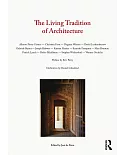Redesigning Gridded Cities focuses with extreme detail on four paradigmatic gridded cities, Manhattan, Chicago, Barcelona, and Hangzhou by analyzing these cities and proposing their own
interventions that implicate the grid in productive ways. They emphasize the value of open forms for city design, and specifically insist that the grid has the unique capacity to absorb and
channel urban transformation flexibly and productively. In both historical and projective, this series of books explore the potential of the grid as a design tool to produce a multitude of
urban processes and forms.
The construction of modern Barcelona can be seen as a laboratory of urban projects and planning strategies. This process spanning more than 150 years features a series of innovative experiments
that correspond to different scales and explain the complexity involved in constructing such a singular capital city.





















